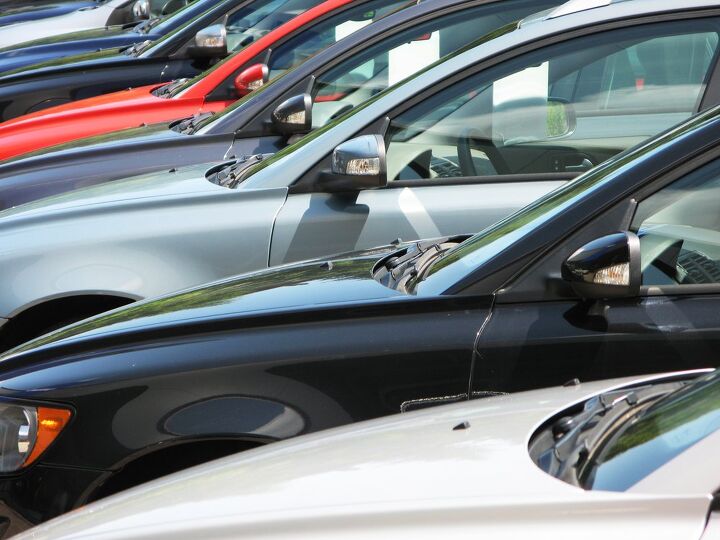Why Falling Used Car Prices Aren't the Bargain You'd Expect
In recent times, the used car market has witnessed a notable decrease in prices, presenting a double-edged sword for vehicle owners and potential buyers. Data from Edmunds' Q4 Used Vehicle Report highlights a trend that could have adverse effects for some consumers, particularly those looking to trade in their vehicles.
Downward Trend in Used Car Values
The average transaction price (ATP) for used vehicles has seen a significant drop, settling at $28,371 in the fourth quarter of 2023. This represents a 4.4 percent decrease from the previous year, indicating a stabilization in the used car market. However, this stabilization comes with its own set of challenges, especially for individuals looking to trade in their vehicles.
The Rise in Negative Equity
One of the more concerning trends is the increase in trade-ins with negative equity. In the last quarter of 2023, 20.4 percent of new vehicle sales involving a trade-in reported negative equity, marking the highest percentage in two years. This trend underscores the growing number of consumers who find themselves owing more on their auto loans than the current value of their vehicles.
Record Highs in Upside-down Loans
The financial burden on those with upside-down loans has reached new heights, with the average amount owed hitting a record $6,064 in Q4 2023. This upward trajectory in debt underscores the financial implications for consumers, especially those who purchased new vehicles during the pandemic at prices above the Manufacturer's Suggested Retail Price (MSRP).
Impact on Near-New Vehicles
Vehicles that are 1 to 2 years old are experiencing the most significant drops in value, making them particularly vulnerable to depreciation. The decrease in ATP for these newer models is stark, with 1-year-old vehicles seeing a reduction of over $6,000. This shift marks a departure from recent years when trade-ins were somewhat protected from negative equity due to high demand for used inventory.
Opportunities Amid Challenges
Despite these challenges, there remains a silver lining for those with the means to purchase used vehicles, especially in the luxury segment. The analysis of 0- to 3-year-old vehicles reveals substantial savings when compared to new models, with luxury large cars and large mainstream SUVs offering significant discounts.
A Cautious Outlook
The forecast for used vehicle prices remains uncertain, influenced by factors such as the length of time vehicles remain unsold and the variability of automaker incentive programs. These factors are likely to affect trade-in values, making it increasingly difficult for dealers and consumers to predict future trends.
This article was co-written using AI and was then heavily edited and optimized by our editorial team.
More by TTAC Staff
Latest Car Reviews
Read moreLatest Product Reviews
Read moreRecent Comments
- L&L I have a 2004 Xb right now the odometer reads 265,000 miles no mayor issues ,pay 14,500 . you don't need complaints about this lunch box the best .
- Jeanbaptiste 2022 Tesla model 3 performance ~35000 miles tires - ~$1000ish. Several cabin filters ~$50
- El scotto No rag-top, no rag-top(s) = not a prestigious car brand. Think it through. All of the high-end Germans and Lexus have rag-tops. Corvette is really its own brand.World-leading engines. AMG, M, S and well Lexus is third-world tough. GM makes one of the best V-8s in the world in Bowling Green. But nooooo, noooo, we're GM only Corvettes get Corvette engines. Balderdash! I say. Put Corvette engines in the top-tier Cadillacs. I know GM could make a world-class 3.5 liter V-6 but they don't or won't. In the interior everything that gets touched, including your butt, has to feel good. No exceptions.Some think that those who pay above MSRP and brag about it are idiots. Go the opposite direction, and offer an extended 10-year 100,000-mile factory warranty. At a reasonable price. That's Acura's current business model.
- Carrera 2014 Toyota Corolla with 192,000 miles bought new. Oil changes every 5,000 miles, 1 coolant flush, and a bunch of air filters and in cabin air filters, and wipers. On my 4th set of tires.Original brake pads ( manual transmission), original spark plugs. Nothing else...it's a Toyota. Did most of oil changes either free at Toyota or myself. Also 3 batteries.2022 Acura TLX A-Spec AWD 13,000 miles now but bought new.Two oil changes...2006 Hyundai Elantra gifted from a colleague with 318,000 when I got it, and 335,000 now. It needed some TLC. A set of cheap Chinese tires ($275), AC compressor, evaporator, expansion valve package ( $290) , two TYC headlights $120, one battery ( $95), two oil changes, air filters, Denso alternator ( $185), coolant, and labor for AC job ( $200).
- Mike-NB2 This is a mostly uninformed vote, but I'll go with the Mazda 3 too.I haven't driven a new Civic, so I can't say anything about it, but two weeks ago I had a 2023 Corolla as a rental. While I can understand why so many people buy these, I was surprised at how bad the CVT is. Many rentals I've driven have a CVT and while I know it has one and can tell, they aren't usually too bad. I'd never own a car with a CVT, but I can live with one as a rental. But the Corolla's CVT was terrible. It was like it screamed "CVT!" the whole time. On the highway with cruise control on, I could feel it adjusting to track the set speed. Passing on the highway (two-lane) was risky. The engine isn't under-powered, but the CVT makes it seem that way.A minor complaint is about the steering. It's waaaay over-assisted. At low speeds, it's like a 70s LTD with one-finger effort. Maybe that's deliberate though, given the Corolla's demographic.


































Comments
Join the conversation